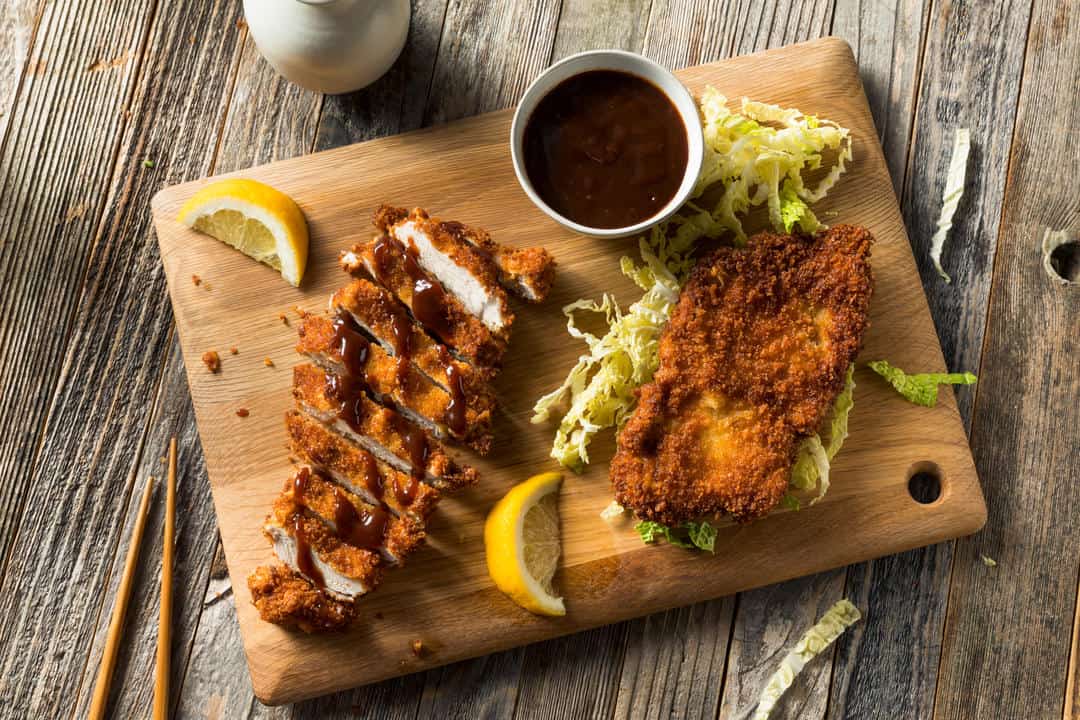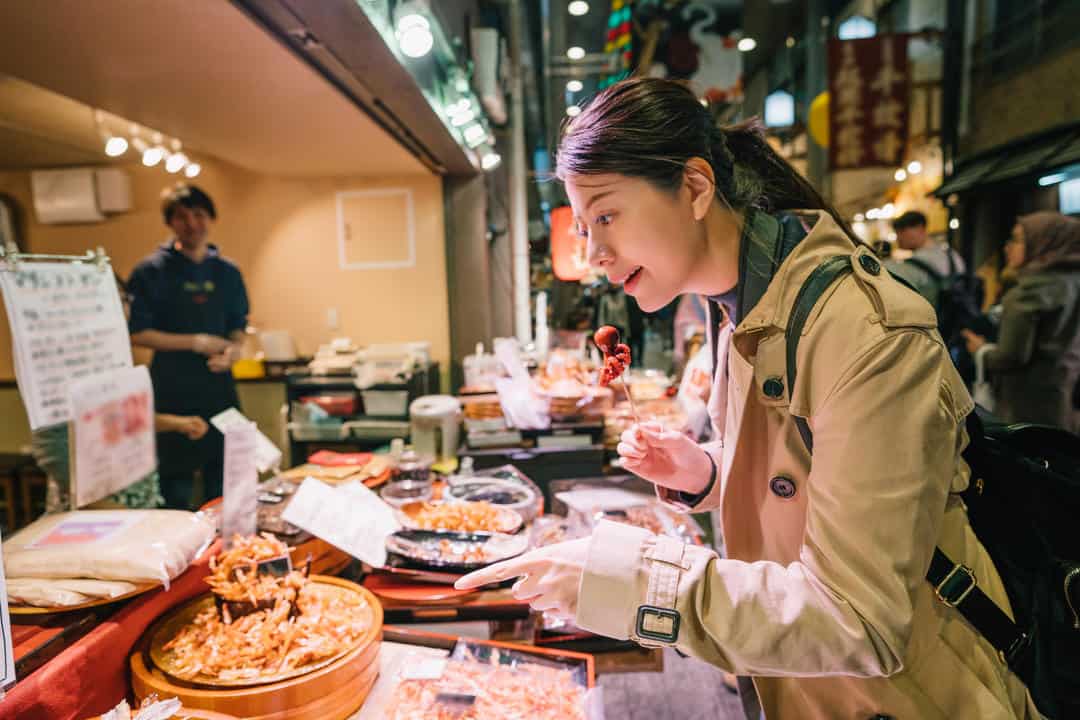
The cuisine of every nation is a symbiosis of traditions, culture, history, philosophy of life and territorial accents. Japan, as an island state, was somewhat isolated from the rest of the world for a long time and was able to create an amazing food system, unlike any other. Food here is elevated to a special cult, the rituals of which are very naturally and harmoniously integrated into the daily life of the Japanese.
What is washoku
In 2013, at a meeting of the UNESCO Intergovernmental Committee, traditional Japanese cuisine, washoku, was included in the list of intangible cultural heritage. But she deserved world recognition long before that. Its uniqueness, which has become the reason for its high popularity, is based on simple but effective rules:
- Maximum variety of ingredients and their freshness.
- The desire is not to compete with nature by creating new incredible tastes, but rather to find a balance of ingredients that would highlight the natural shades of each product.
- Respecting the seasonality of dishes.
- Healthy and balanced nutrition according to the ichiju-sansai principle. It means that the main meal should include one soup, three types of protein and vegetable snacks, and rice.
- Close connection with traditional holidays and strengthening family ties through shared meals.
The cuisine of the Land of the Rising Sun is simple, but at the same time surprisingly harmonious, refined, tasty and infinitely varied. Its basic principles were formed back in the medieval Heian era, and are still observed.
Japanese food must satisfy the five tastes of gomi – sweet, salty, spicy, sour and bitter. But there is a sixth, special taste that the culinary experts of this country are able to masterfully reveal – umami. It is characteristic of many protein products and broths created on their basis.
For a meal to be truly enjoyable, it must please all the senses. Therefore, the beauty and aesthetics of the design and presentation of dishes are highly valued. The principle of seasonality is observed not only in the selection of products for cooking, but also in serving. The shape, decor and color scheme of the dishes are carefully thought out. It should correspond to the current time of year and be in harmony with the ingredients of the dishes served. It also uses the principle of five primary colors – white, black, yellow, red and green, which must be on the table in different combinations. And special dining etiquette, which involves the use of hashi chopsticks, turns any meal into a kind of theatrical performance.
All over the world, Japanese cuisine is rightly considered the standard of healthy eating. Here they use only the freshest and most diverse ingredients and are very wary of shelf-stable products (excluding fermented ones). Dishes should be prepared quickly, simply and, if possible, with minimal heat treatment, which allows them to retain maximum of their natural taste and nutritional value. Food is served in small portions, and satiety is achieved through a large selection of dishes. Any meal, even a regular snack, is important and should be beneficial and enjoyable. Such a simple philosophy at first glance has brought the gastronomic traditions of Japan to a completely new level. Today, the cuisine of this state is a world heritage and serves as a source of inspiration for the best chefs on the planet. And getting to know it is one of the most wonderful reasons to visit the Land of the Rising Sun.
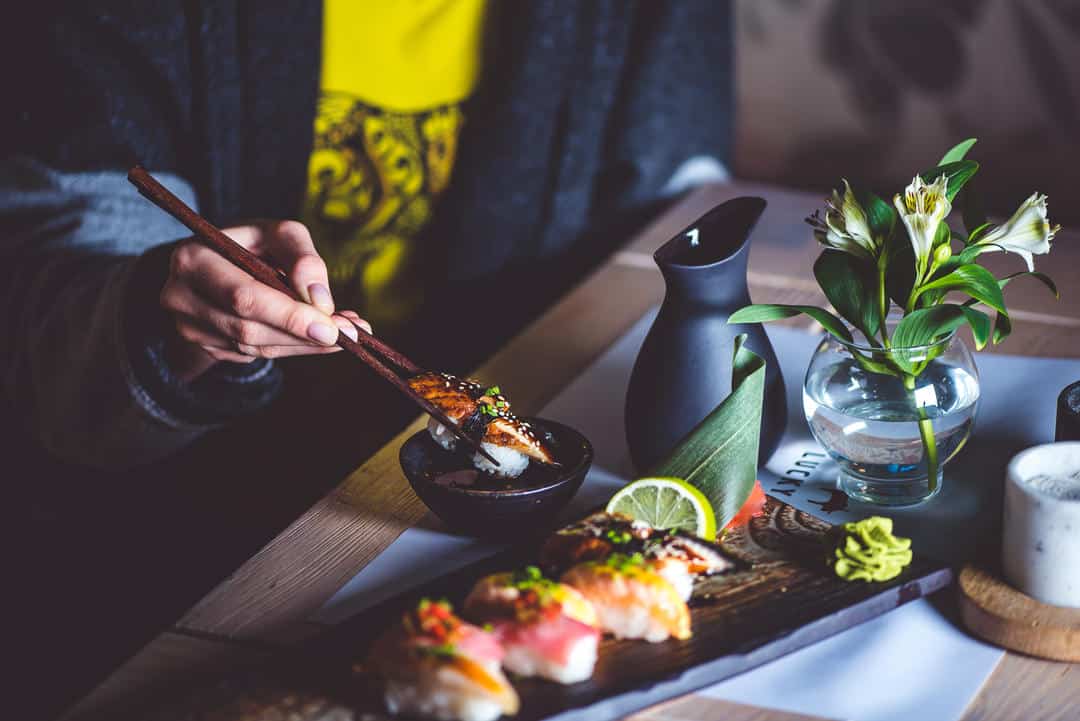
Dishes that capture the essence of Japanese cuisine
Sushi
In the 21st century, their popularity has gained a planetary scale. But at the same time, the world community is familiar with a very limited number of varieties. In fact, the only constant in making sushi is the special rice. And the huge selection of serving forms and fillings (fish, seafood, caviar, meat, vegetables) makes the variety of flavors almost endless:
Makizushi (or maki) is the most familiar type of sushi to foreigners, which outside Japan is called rolls. The dish is served in the form of a cylinder of nori (dried seaweed) cut into 6 or 8 pieces, covering the rice and filling. Sometimes a thin omelette serves as a wrapper.
- Futomaki differs from makizushi in its larger size and several types of fillings, which are combined for additional taste and beautiful colors.
- Uramaki is a maki roll with rice inside out.
- Gunkan maki – have an oval shape, the outside is framed by a strip of seaweed, and the filling is laid out on top.
- Nigiri is pieces of raw fish or shrimp served on a thick bed of rice.
- Chirashizushi (chirashi sushi or barazushi) is a plate with rice and various toppings.
- Temaki is a hand-rolled cone of nori in which rice and other ingredients are served.
- Oshizushi is sushi in the form of pressed bars, made using a wooden oshibako device.
- Inarizushi are pouches of deep-fried tofu, thin omelette or dried pumpkin, usually filled with only rice.
- Narezushi is an ancient method of preparing a dish by fermenting fish and rice for many months.
Sushi is usually eaten with wasabi, pickled gari ginger and soy sauce.
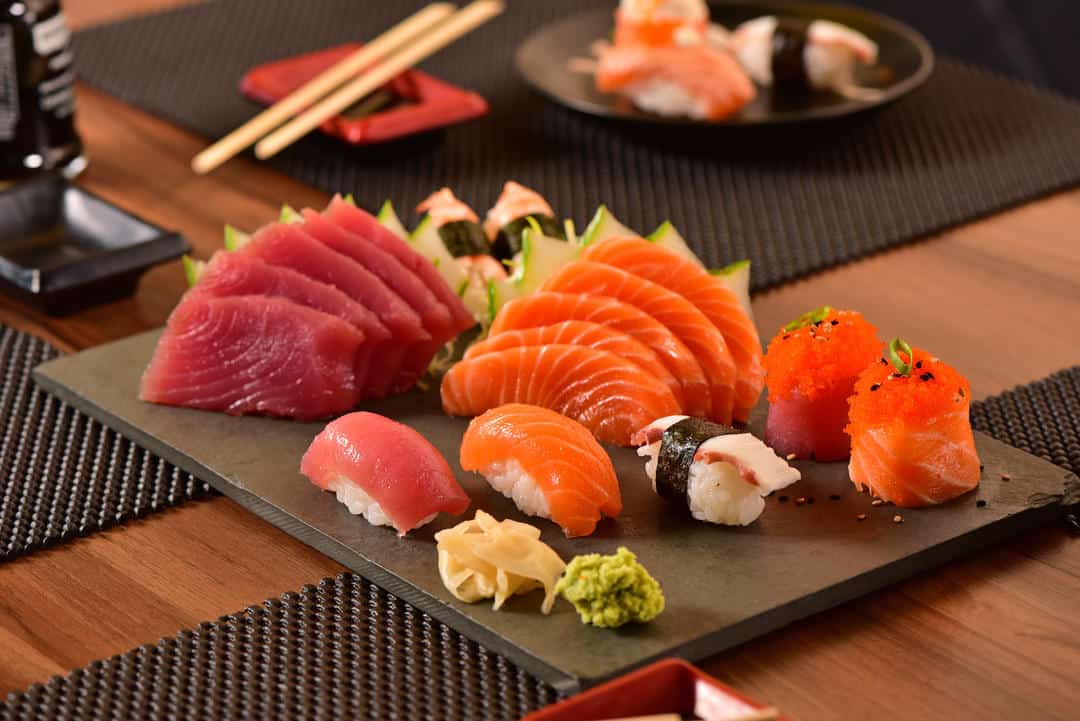
Sashimi
Many foreigners, when ordering this dish in Japanese restaurants, expect to be offered beautifully decorated slices of fish. In fact, the term sashimi refers to any thinly sliced raw food. In addition to fish and seafood, these can be beef (gyusashi), venison (shikasashi), chicken (torisashi) and horse meat (basashi). The classic presentation of this Japanese dish includes wasabi, ginger, daikon and perilla leaves (shiso). The set with shikasashi includes citrus fruits, which more fully reveal the taste of deer meat. And when ordering basashi, add green onions.
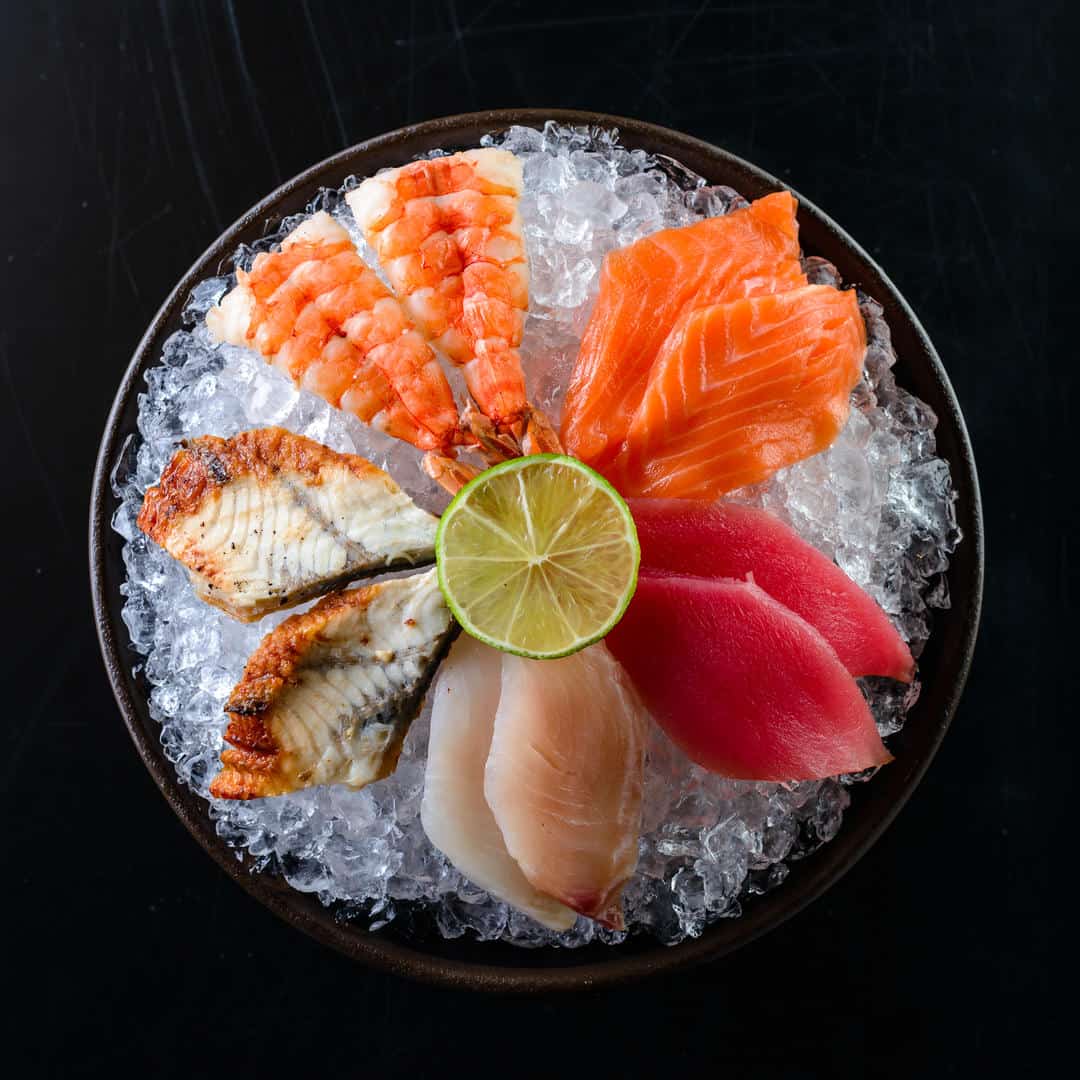
Onigiri
The second name for this favorite breakfast or snack among the Japanese is omusubi. It consists of rice balls with a wide variety of fillings – from vegetables to meat and seafood. In Tokyo, for example, onigiri with pickled umeboshi plum, which has a specific sour-salty taste, is popular. They can also be triangular in shape and wrapped in nori. Unlike sushi, which requires special skills and male hands, onigiri is prepared by girls. This dish is inexpensive and so popular that you can buy it literally everywhere – from supermarkets to vending machines.
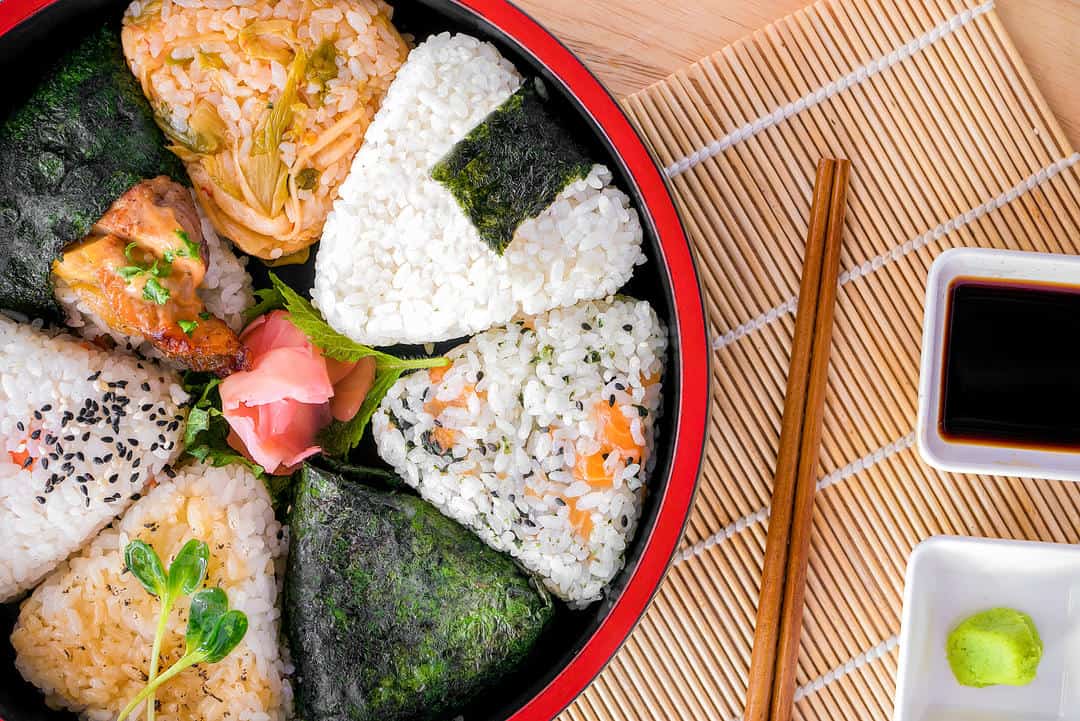
Tempura
Another iconic Japanese dish, fresh shrimp, fish and vegetables are deep-fried and coated in a delicate, crispy batter of egg, ice water and flour, whipped until airy. When placed in boiling oil, it blooms like a flower (hana in Japanese). This is why this cooking method is called hanaage. Tempura is served with a special sauce – tensuyu. It is a broth made from kombu seaweed or dried mackerel, very sweet mirin rice wine and soy sauce. For a refreshing taste, suggest ginger and grated radish.
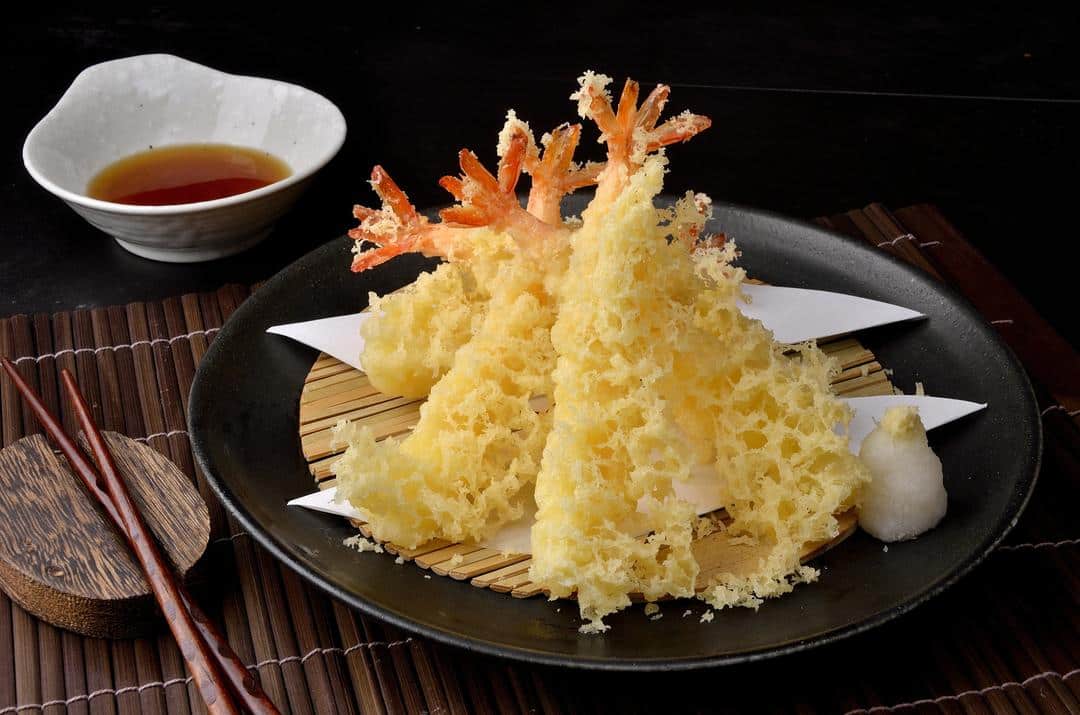
Yakitori
Chicken skewers on bamboo skewers baked over charcoal are one of the Japanese’s favorite snacks to accompany alcohol and are simply ideal for get-togethers with friends or colleagues. That’s why yakitori is sold in any izakaya. Chefs use all parts of the bird – breast, thigh, skin, liver, heart and cartilage. Each type of meat is served on a separate skewer. Before cooking, it is marinated in a mixture of rice wine, soy sauce, sugar and salt and served with tare sauce. In addition to chicken, other types of meat and vegetables can be used. A very tasty option is shiitake and enoki mushrooms wrapped in bacon along with green onions and shishito peppers.
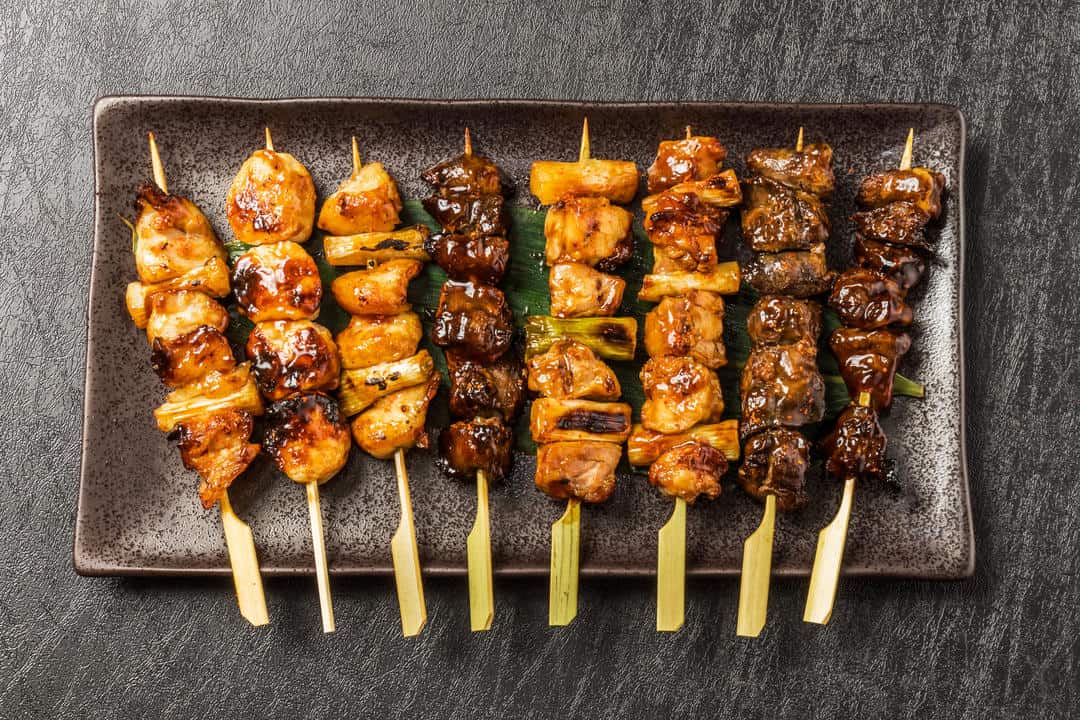
Ramen
Another name for a Japanese dish that the whole world knows. It was brought to Japan from China at the beginning of the 20th century and very quickly gained incredible popularity. Essentially, it is a hot soup made from fresh wheat noodles in a flavorful broth with various additives. What ingredients a customer will find in his ramen depends on the region, city and specific restaurant. There are a huge number of options for preparing this dish, as well as original recipes. The must-try noodles are topped with chashu pork, memma bamboo shoots, tsukemono pickles, marinated shiitake mushrooms, mung bean sprouts, fresh spinach and green onions, and a boiled or fried egg. When it comes to ramen broth, there are four main types:
- Shio is transparent and light with a pronounced salty taste.
- Shoyu is made from soy sauce, has a light aroma and light brown color.
- Miso is a thick, opaque and savory broth made from soybean paste.
- Tonkotsu – boiled from pork bones for 12 to 20 hours, has a rich flavor and somewhat viscous texture.
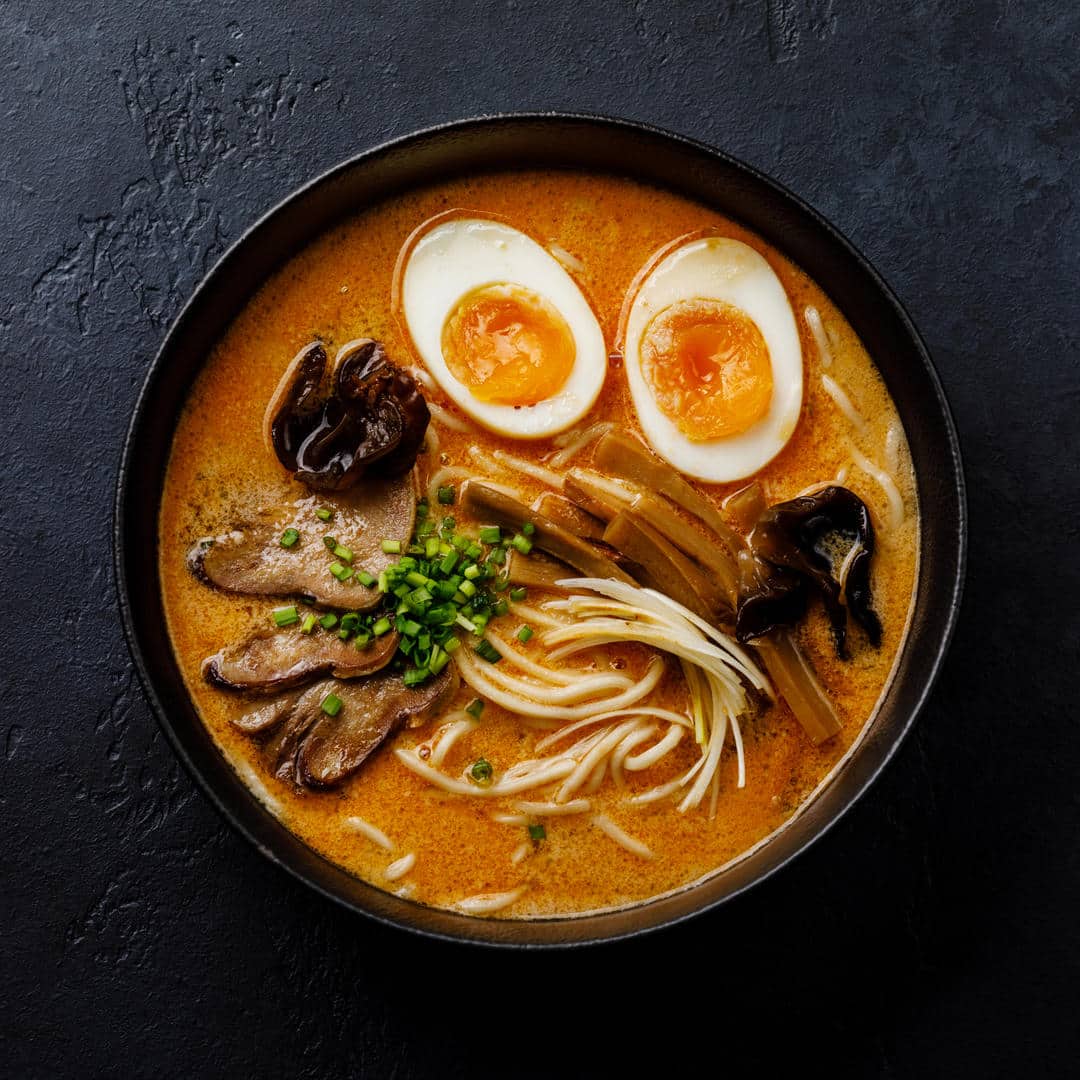
Udon
These are hearty wheat noodles, 2 to 4 mm wide in diameter, which, unlike ramen, do not contain eggs. When boiled, it acquires a soft and elastic consistency. Noodles are consumed both hot and cold. Sometimes it serves as a side dish for meat and vegetables. But most often, udon is filled with dashi broth, seasoned with mirin rice wine, green onions and soy sauce. When serving, add chicken, shrimp tempura, and tofu. But these components may vary depending on the season, region and personal preference. The main thing is to create a balanced taste.
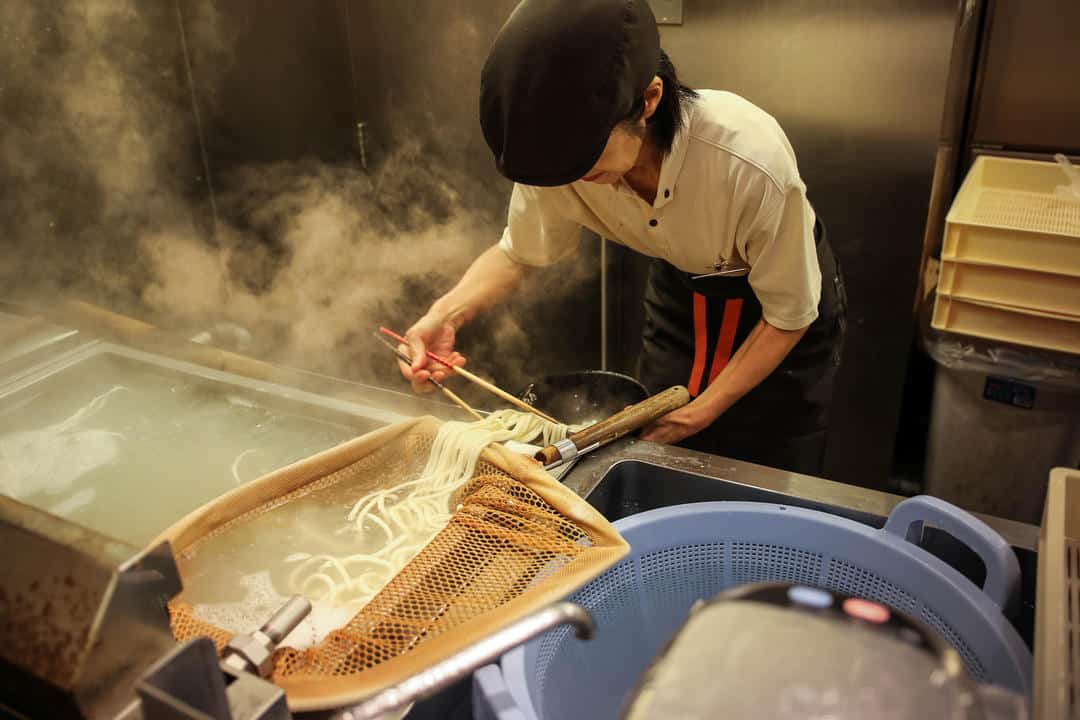
Soba
This is the name for gray-brown thin noodles, which are made from buckwheat flour with a small addition of wheat. The Japanese have been eating it for 5 centuries and sell it in both the most inexpensive noodle shops and luxury restaurants. During the cooking process, soba retains a pleasant dense consistency. In summer, it is usually consumed cold and dipped in tsuyu sauce. It is made from dashi broth (a decoction of kombu seaweed infused with bonito tuna flakes), soy sauce, mirin and sake. During the cold season, soba is often eaten as a noodle soup with hot broth. A variety of ingredients can be used as additives – seafood, chicken, beef, eel, fried tofu. There are also vegetarian options – with chopped seaweed and seasonal vegetables.
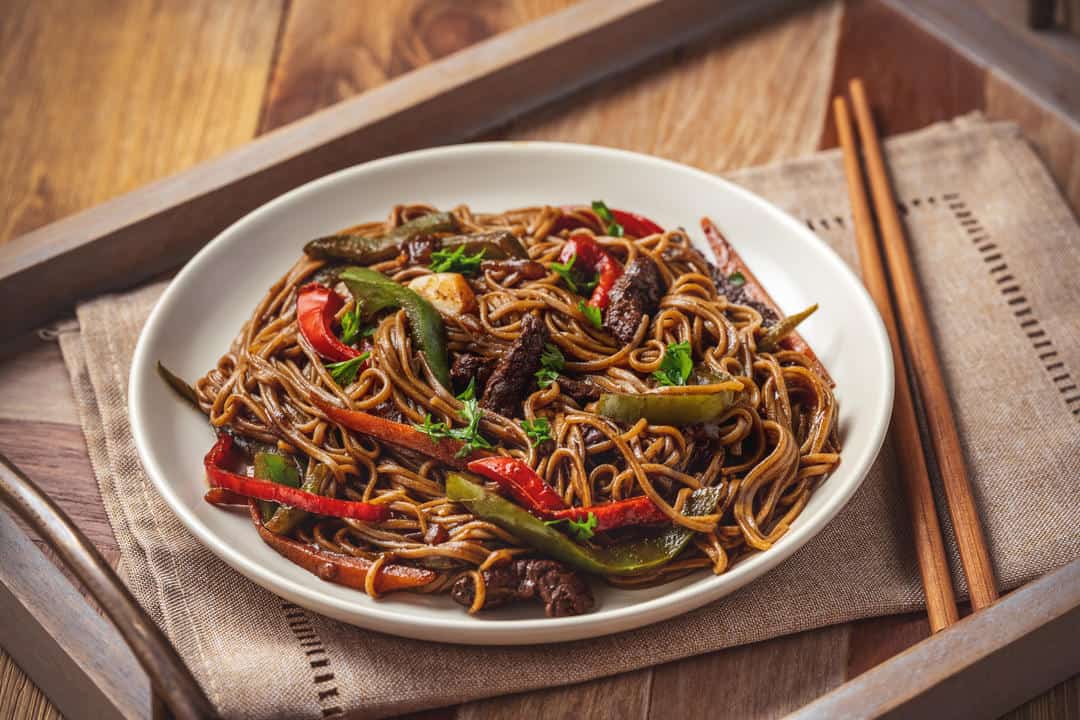
Miso soup
It is never served as a main dish – it is traditionally used as a side dish for any other dish, excluding desserts. The soup is made from dashi broth and miso paste made by fermenting soybeans. Add green onions, wakame seaweed, tofu, sweet potatoes, daikon, shrimp, fish, mushrooms or meat. Miso soup is a light and nutritious dish. There are hundreds of regional variations, from the simplest to the most luxurious, which, for example, include crab meat. The Japanese also eat this soup to cure hangovers.
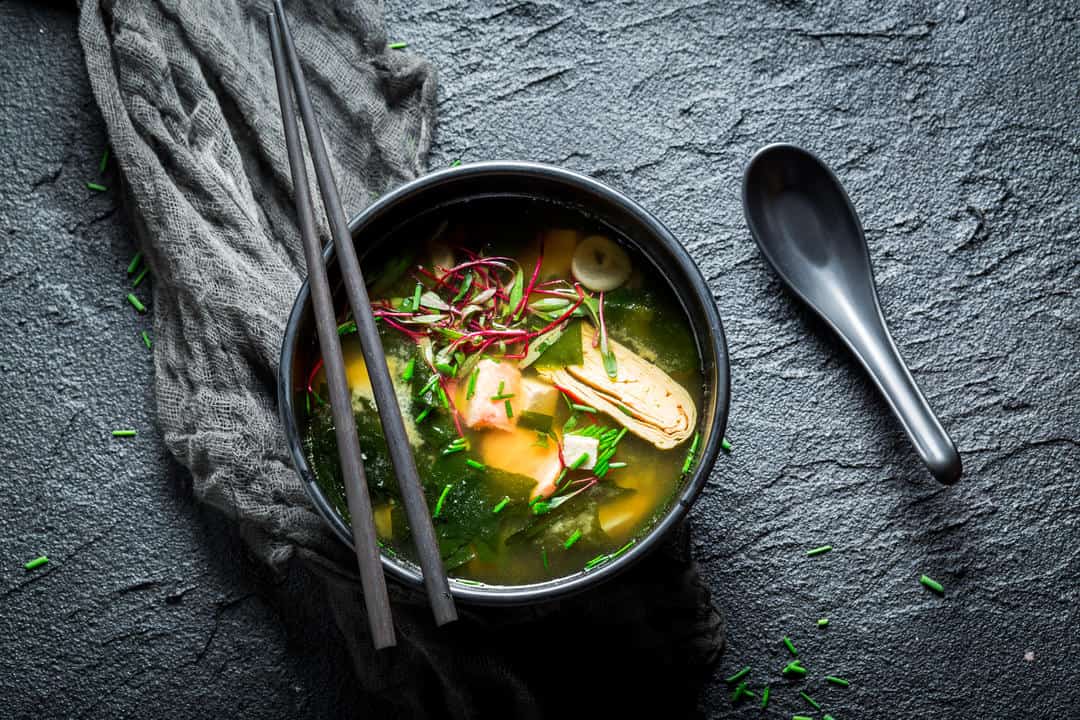
Tonkatsu
It is a breaded, deep fried pork cutlet. Easy to prepare and filling, the dish is often used as a filling for sandwiches or served as part of a set lunch with soup, rice, coleslaw and other side dishes. Tonkatsu is poured with the sauce of the same name, which has a dark color, thick consistency and sweet and sour taste. The dish is sold in many inexpensive restaurants and snack bars, grocery stores and shopping centers. Much less common is another variation of it – a beef cutlet called gyukatsu.
